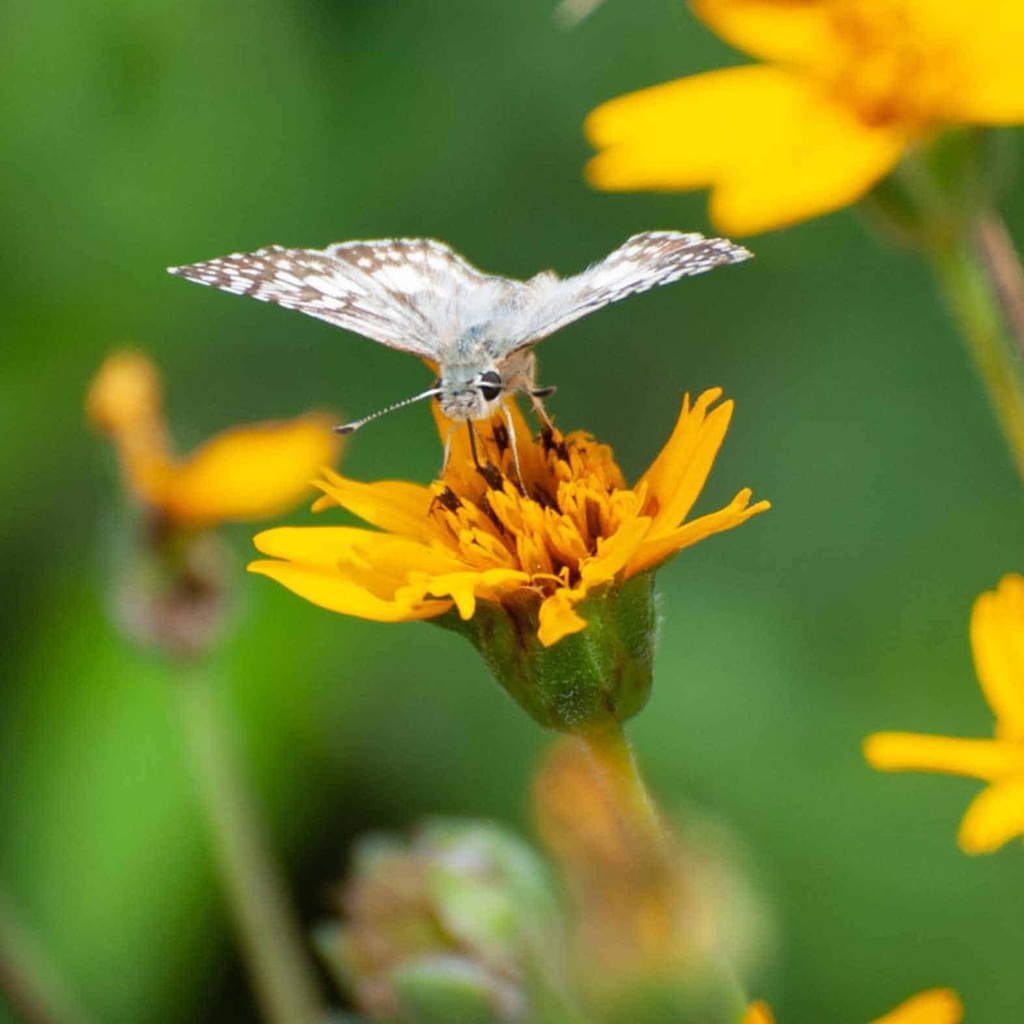KING'S FEED THE B'S MIX
Short Description:
Bees – Butterflies – Birds Douglass King Seeds has designed a Texas Native Seed Mix for pollinators that will provide food for caterpillars of butterflies and moths, provide nectar for bees, butterflies, and hummingbirds, and provide seeds for songbirds. This mix will create a small native habitat in your yard. You will be able to enjoy blooms from March until Thanksgiving and watch as many species of birds and insects use your garden oasis. Contains: Texas Bluebonnet, Cuero Purple Prairie Clover, Eldorado Engelmann Daisy, Illinois Bundleflower, Fuego Indian blanket, Zapata Rio Grande Clammyweed, Partridge Peas, Plains Coreopsis, Purple Coneflower, Clasping Leaf Coneflower, Black-Eyed Susan, Mexican Hat, Lanceleaf Coreopsis, Lemon Mint, Scarlet Sage, Evening Primrose, and Greenthread.
All payments are final and no refunds will be processed.
All orders are processed within 2-3 business days.
View Our Terms and Conditions
Description
King’s Feed the B’s Pollinator Mix is a Texas Native Seed Mix that will provide habitat for bees, butterflies, hummingbirds, and birds. It can be planted alone or added to your custom mix. The mix contains both annual and perennial native flowering species, and it will provide year-long cover and benefits to pollinators.
These forbs and legumes will provide food for caterpillars of butterflies and moths, provide nectar for bees, butterflies, and hummingbirds, and produce seeds for songbirds. Species included are also beneficial habitat components for quail, deer, and turkeys.
This mix provides nectar and blooms from March through Thanksgiving.
Give it a Monarch Boost! Add a packet of Mariposa Zizotes Milkweed to spread with your pollinator mix to add one more butterfly species that can benefit your garden and provide a host plant for Monarch Butterflies.
*The graph shows when each species in this mix will bloom, and whether birds, bees, or butterflies benefit from it. The butterflies are listed by how many species of butterfly use the plant as a larval host, which means where they will lay their eggs. For example, 27 different species of butterflies will lay their eggs on bluebonnets. Butterflies are very specific as to where they will lay their eggs. Details on which species prefer the plants came from The National Wildlife Federations Native Plant Index, The Audubon Society, BeeSponsible, and the Native Plant Network.
Landscape Planting Rate: 1-2 lbs. per 1,000 square feet
- A 1 lb. bag should cover about 500 square feet. (Or a 50′ by 10′ area.)
- A 2 lb. bag should cover about 1,000 square feet. (Or a 50′ by 20′ area.)
Rangeland Planting Rate: 10-20 lbs. per acre.
- A 5 lb. bag should cover about 1/4 of a acre.
Best Time to Plant
Mid-August through October, or early Spring.
Components
Texas Bluebonnet, Cuero Purple Prairie Clover, Eldorado Engelmann Daisy, Illinois Bundleflower, Fuego Indian blanket, Zapata Rio Grande Clammyweed, Partridge Peas, Plains Coreopsis, Purple Coneflower, Clasping Leaf Coneflower, Black-Eyed Susan, Mexican Hat, Lanceleaf Coreopsis, Lemon Mint, Scarlet Sage, Evening Primrose, and Greenthread
Region
Texas-wide











































